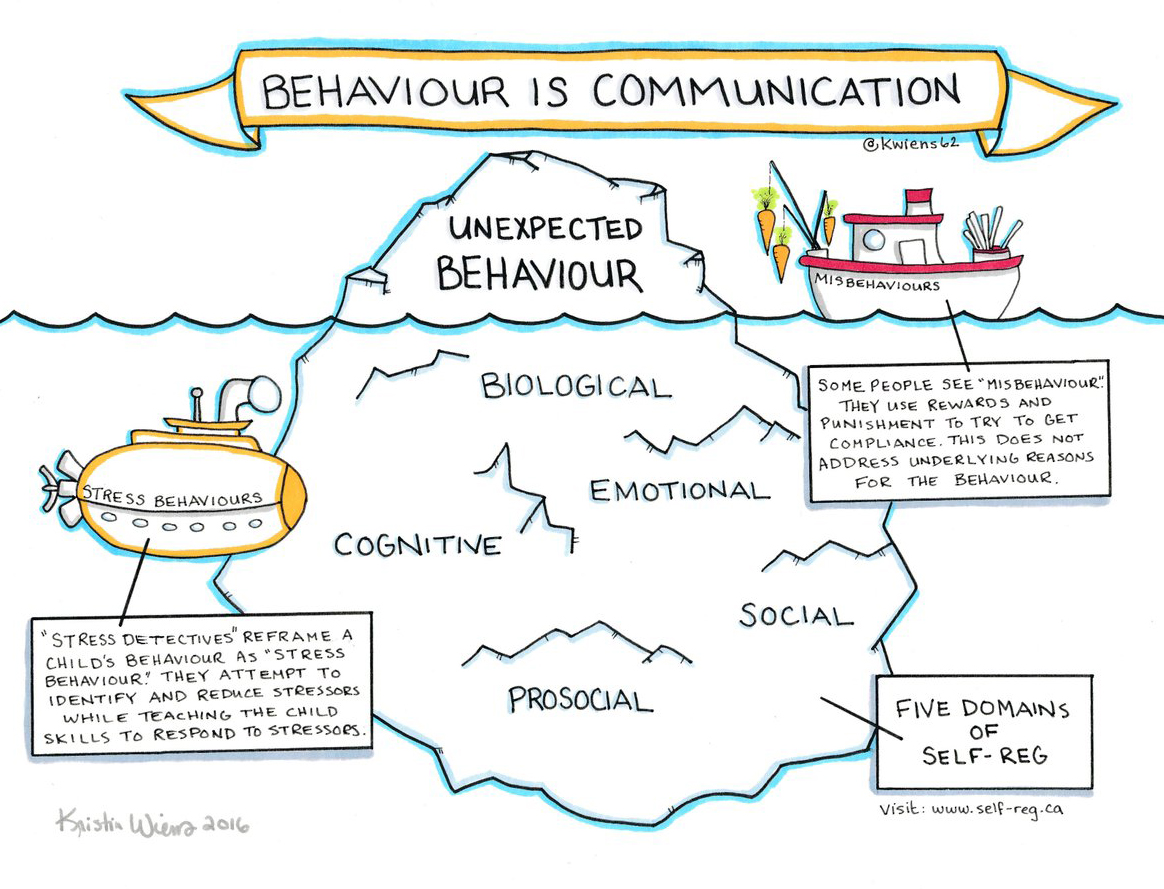Module 3: Behaviour is Communication
Causes of Behaviours
The reason a student exhibits a particular behaviour is sometimes difficult to determine. To understand why the student communicates the way they do, we can consider three possible factors:
- The student’s internal states
- Environmental factors
- Effective support

The Student’s Internal State
Everyone communicates about their internal states without using words, such as grimacing in pain and smiling when we’re happy. Others observe these behaviours and ask questions like “How are you feeling?” to clarify what they think they see. Most of us can respond with words to help the other person understand what we are feeling, but they are unable to see.
There is a huge difference between misbehaviour and stress behaviour, as described below. We must understand the difference in behaviour to ensure our response is matched, or it can be worse for our students and hard on everyone!
Stuart Shanker, Self-Reg
The student might be trying to express something:
| Biological |
|
| Cognitive |
|
| Emotional |
|
| Social |
|
| Prosocial |
|

Watch the following video of a student with a vision impairment who doesn’t speak as they explore playdough.
- Think about what their behaviour (running the playdough through their hair and on their face) might be communicating.
- Do you think they are trying to explore the texture?
- Do they seem to enjoy the feeling? What could you say to this student that might honour their communication attempt?
Environmental Factors
Environments have a significant impact on how students communicate. Environmental factors can increase or decrease the intensity, tone, frequency, and duration of communication behaviours. Knowing how a student is impacted by the environment is the first step in organizing a student’s day to support their sensory, cognitive, and physical needs. For example, classroom stressors might include visual clutter on a desk, pathways that are too narrow to maneuver in a wheelchair, loud noises and/or the flicker of fluorescent lights. It is important to use our knowledge about the student to reduce environmental stressors whenever possible.
Effective Support
Assisting a student with complex needs to communicate effectively requires taking the time to assess and interpret all the ways the student communicates. Educators and specialists have the responsibility to identify and teach the skills the student needs, and to modify expectations to make them attainable.
The following are strategies suggested to reframe behaviour as communication, and to proactively encourage students to be effective communicators. Proactive work can include reading the student’s records, talking to the family and other people who know the student well, and observing the student carefully. Having this background information will help identify strategies that will best support the student to develop communication skills, and provide accommodations and modifications for success.